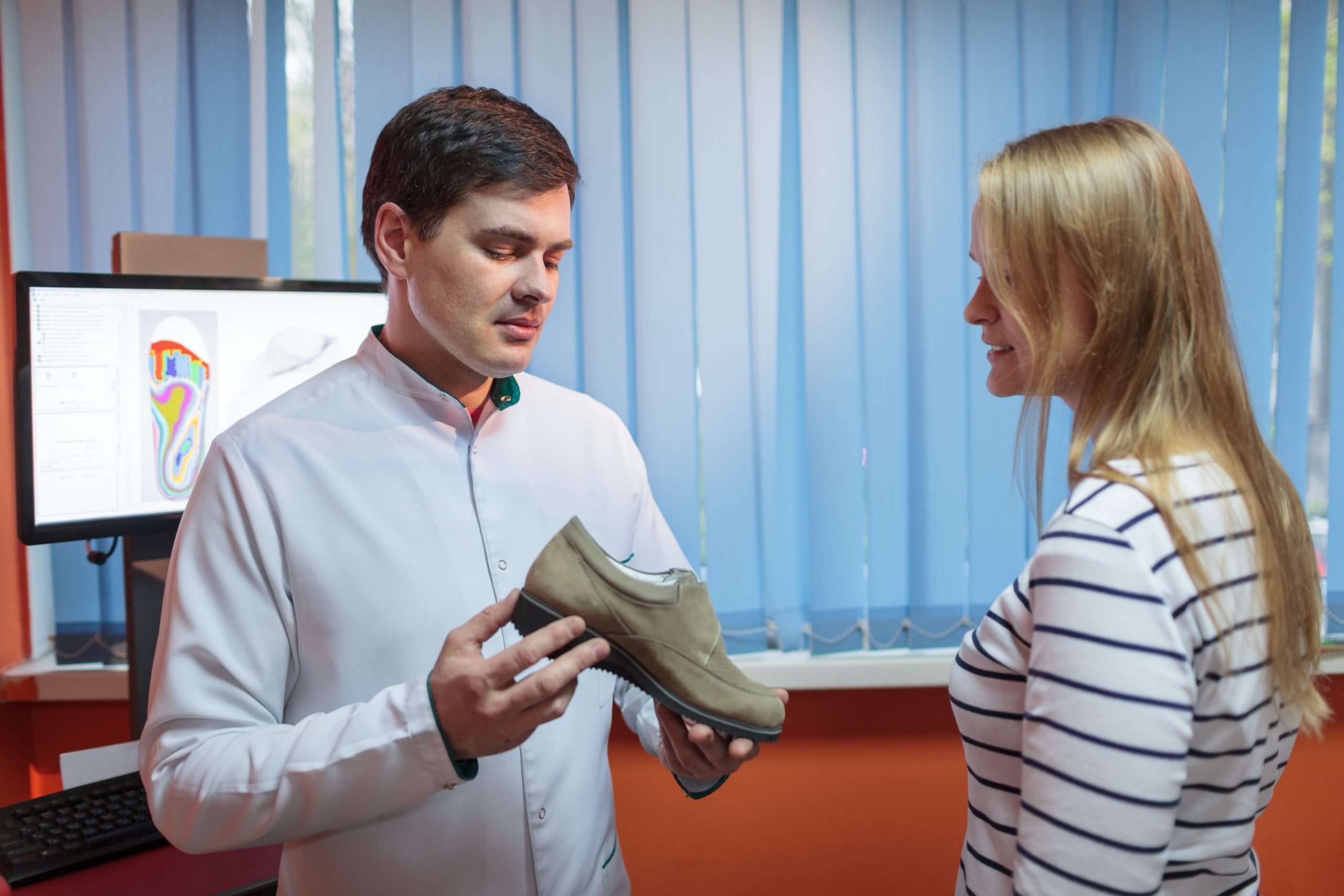Mobility loss affects us all, whether due to aging, disability, or pregnancy.
Even if movement is restricted, wearing shoes is a must for anyone who needs to get around.
If you or someone you know has recently experienced a loss of mobility, there are a few things to consider before buying appropriate footwear.
Here’s what our podiatrist has to say about choosing your shoes when mobility is limited.
Opt for non-slip soles
If you have trouble moving around, this is a must-have. Falls will be less frequent if you use a shoe with a non-slip sole.
Without being a miracle solution, non-slip soles offer more freedom to people with declining mobility than older people.
When the weather doesn’t allow you to use non-slip shoes in the winter, add removable crampons to your boots.
Avoid wearing slippers or merely socks when going around your house.
Consider the characteristics of your feet
Your feet’s measurements are relatively consistent once they’ve grown to their full size.
Many events that limit your mobility, however, can temporarily alter your morphology:
- Pregnancy: Weight gain combined with hormonal changes can cause your feet to lengthen and sag, this is called acquired flatfoot.
- Obesity: Excess weight can make movement difficult by changing the angle of the feet and flattening the arch.
- Venous insufficiency: It puts strain on the legs and causes the feet to swell.
- Diabetic foot: Diabetes can create ulcers on the bottom of the foot because it produces a lack of sensation in the lower limbs and impairs blood flow.
- Foot arthritis: this inflammatory joint disease causes significant plantar deformities and reduces the protection offered by fatty tissue.
You should analyze the state of your feet before choosing the correct shoes for you.
The podiatrist will be able to perform the necessary diagnostic tests and identify the appropriate type of footwear for you during your visit to the clinic.
Think about incorporating orthopedic devices into your footwear
If your podiatrist suspects a specific plantar issue, he or she would most likely recommend orthopedic treatment.
If they recommend custom orthotics, they may advise you to buy shoes that match the following criteria:
- A higher cut that keeps your heels from sliding off.
- Closures with strong Velcro or laces that help you to properly lock your feet in the shoe
- A heel lower than 5 cm; otherwise, keeping your insoles in your shoes would be tough.
- One size up is recommended, especially if your shoe insoles are thicker.
However, insoles come in a range of shapes and sizes, and most shoes can handle them well.
Finally, if you require foot surgery, you will most likely have to wear a bandage, cast, or compression stockings.
In a similar case, you may need to be fitted with a temporary custom shoe or sandal that will accommodate these features:
- Enhanced depth
- A non-slip, long-lasting sole
- An upper that is more open
- Velcro straps with many elastics
- Materials that are easy to breathe in
PiedRéseau offers concrete orthopedic treatments to help you regain your mobility
Even if the loss of mobility is only brief, it often necessitates a modification in the way shoes are worn.
The podiatrist can help you choose shoes that are appropriate for your condition.
Do you find it increasingly harder to move around? Speak with a PiedRéseau-affiliated podiatrist.

